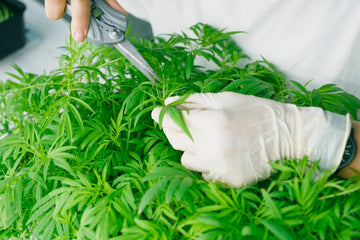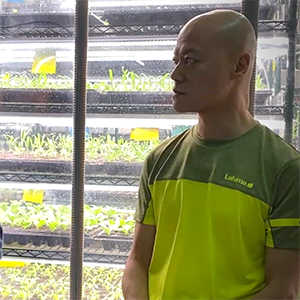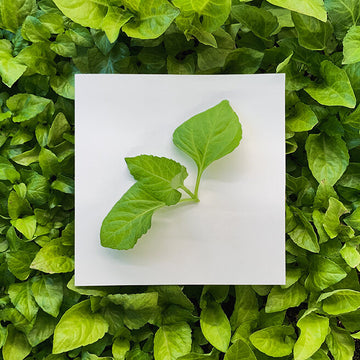
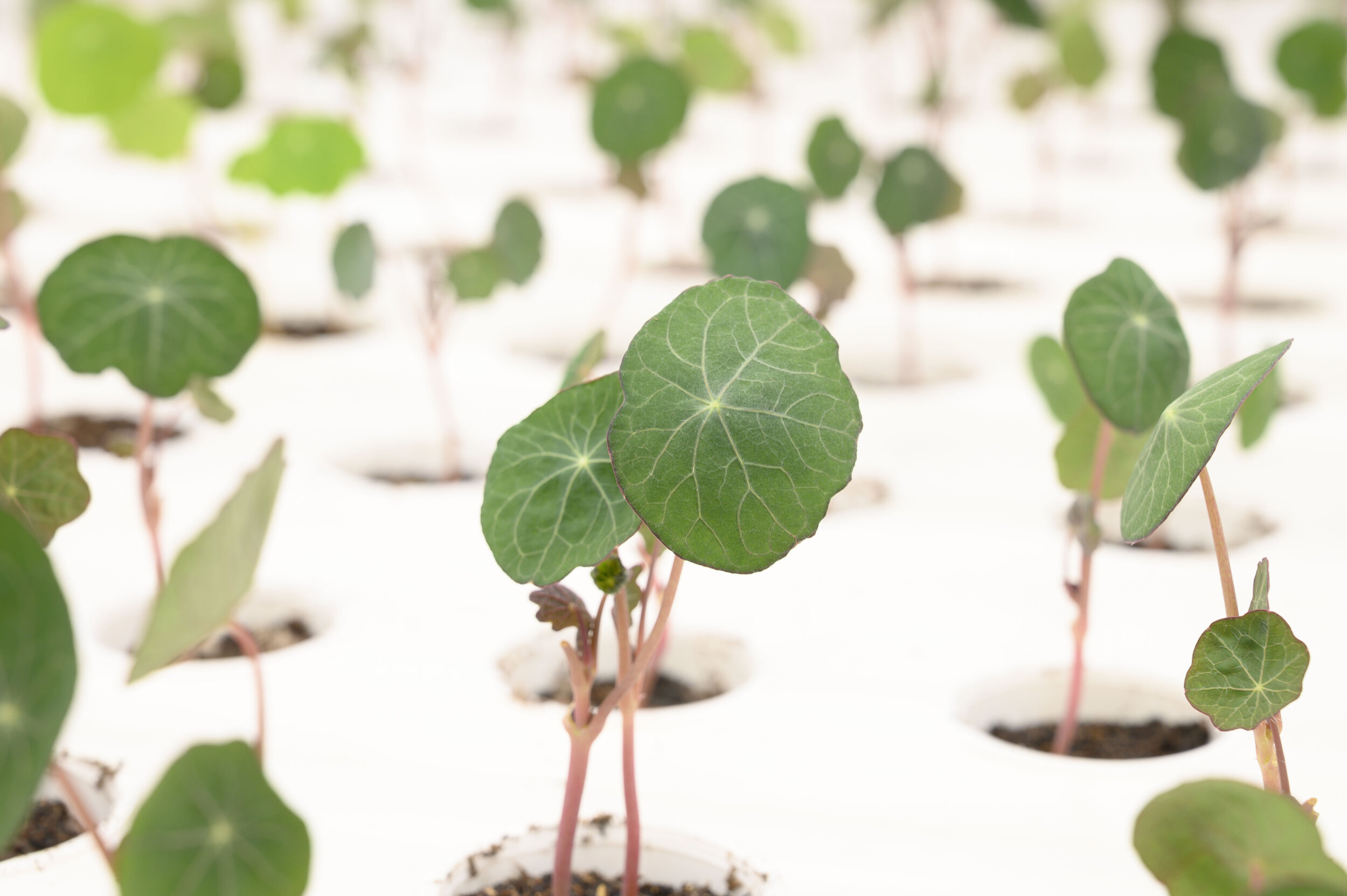
Nasturtium: This Peruvian native was introduced into Europe back about 1686.
Tropaeolum majus - As the famous Swedish botanist Carolus Linnaeus, the leaves looked like shields, and the red flowers looked like blood-stained helmets of ancient Roman warriors. Hence the Latin name Tropaeolum.
Chinese Name: 旱金蓮
Health Benefits
Nasturtium can be consumed as a functional food source due to its high content of trace elements and bioactive compounds. For example, nasturtium flower is rich in zinc1, which is an important macronutrients to support growth and the immune system. The yellow-red colour of the flower is from lutein2, a naturally occurring carotenoid synthesized only by plants. Food rich in lutein might help reduce the risk of cataract and macular degeneration. Antioxidant activity suggested in Nasturtium is an effect of its high anthocyanins, polyphenols and vitamin C content3,4.
Flower - Nasturtium flower can be a great source of natural pigments and antioxidants for functional food consumption1.Leaf - Proven to have antibacterial, antifungal, antioxidant and anticancer properties2.
1Navarro-González, I., González-Barrio, R., García-Valverde, V., Bautista-Ortín, A.B. and Periago, M.J. (2015) Nutritional composition and antioxidant capacity in edible flowers: characterisation of phenolic compounds by HPLC-DAD-ESI/MSn. International Journal of Molecular Sciences, 16(1), pp.805-822.
2Niizu, P.Y. and Rodriguez‐Amaya, D.B. (2005) Flowers and leaves of Tropaeolum majus L. as rich sources of lutein. Journal of Food science, 70(9), pp.S605-S609.
3Garzón, G.A. and Wrolstad, R.E. (2009) Major anthocyanins and antioxidant activity of Nasturtium flowers (Tropaeolum majus). Food Chemistry, 114(1), pp.44-49.
4Valsalam, S., Agastian, P., Arasu, M.V., Al-Dhabi, N.A., Ghilan, A.K.M., Kaviyarasu, K., Ravindran, B., Chang, S.W. and Arokiyaraj, S. (2019) Rapid biosynthesis and characterization of silver nanoparticles from the leaf extract of Tropaeolum majus L. and its enhanced in-vitro antibacterial, antifungal, antioxidant and anticancer properties. Journal of Photochemistry and Photobiology B: Biology, 191, pp.65-74.
To most farmers and gardeners, Nasturtium is known to be a weed because of how quickly and easy they grow. They are an extremely resilient plant. In our home city of Hong Kong, they can thrive in hot and humid weather. They make a great plant starter plant to grow at home. More importantly, they are a great edible plant. Below is a guide (based on the methods we use in our farm) to grow and maintain nasturtium and of course, we could not resist finding some great recipes to ensure you will get to enjoy the leaves and flowers you grow.
How to Grow
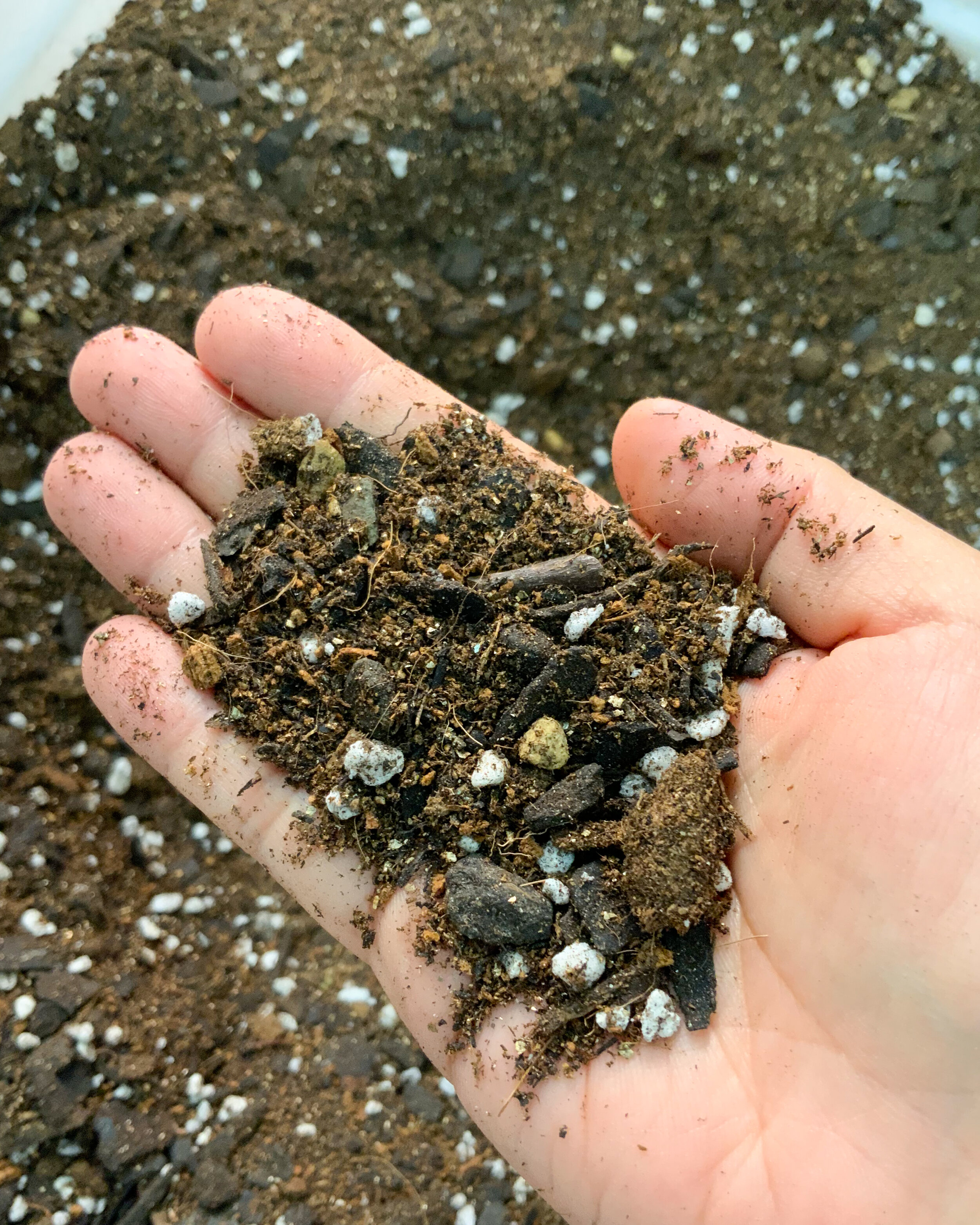
Grow Medium we currently use at Common Farms.
Growing Condition
Time to Growth
Seed should sprout between 4-7 days. This is dependent on your seed and the seed quality. Move it to light straight away once it germinates.
Expect about 55 to 65 days from seed to harvest, depending on the variety and the access to water and light.
Grow Medium
Prefers well-drained and lean/average soil.
We need to give them a regular mixture with coco coir, a mixture of mulch, perlite, vermiculite, volcanic rocks
Optimal Temperature
Germination: 22°C ;
Grow: 24°C
Light
Nasturtium grows best with full light (6–8 hours), but partial light(3–6 hours) is fine. If you are growing indoors and have limited access to natural sunlight, you can use artificial grow lights.
Tips: Full light can grow for more flowers.
Fertilizer
Nasturtiums are not necessary need extra fertilizer, they grow well in poorer soils. Too much nitrogen will encourage more foliage than flowers.
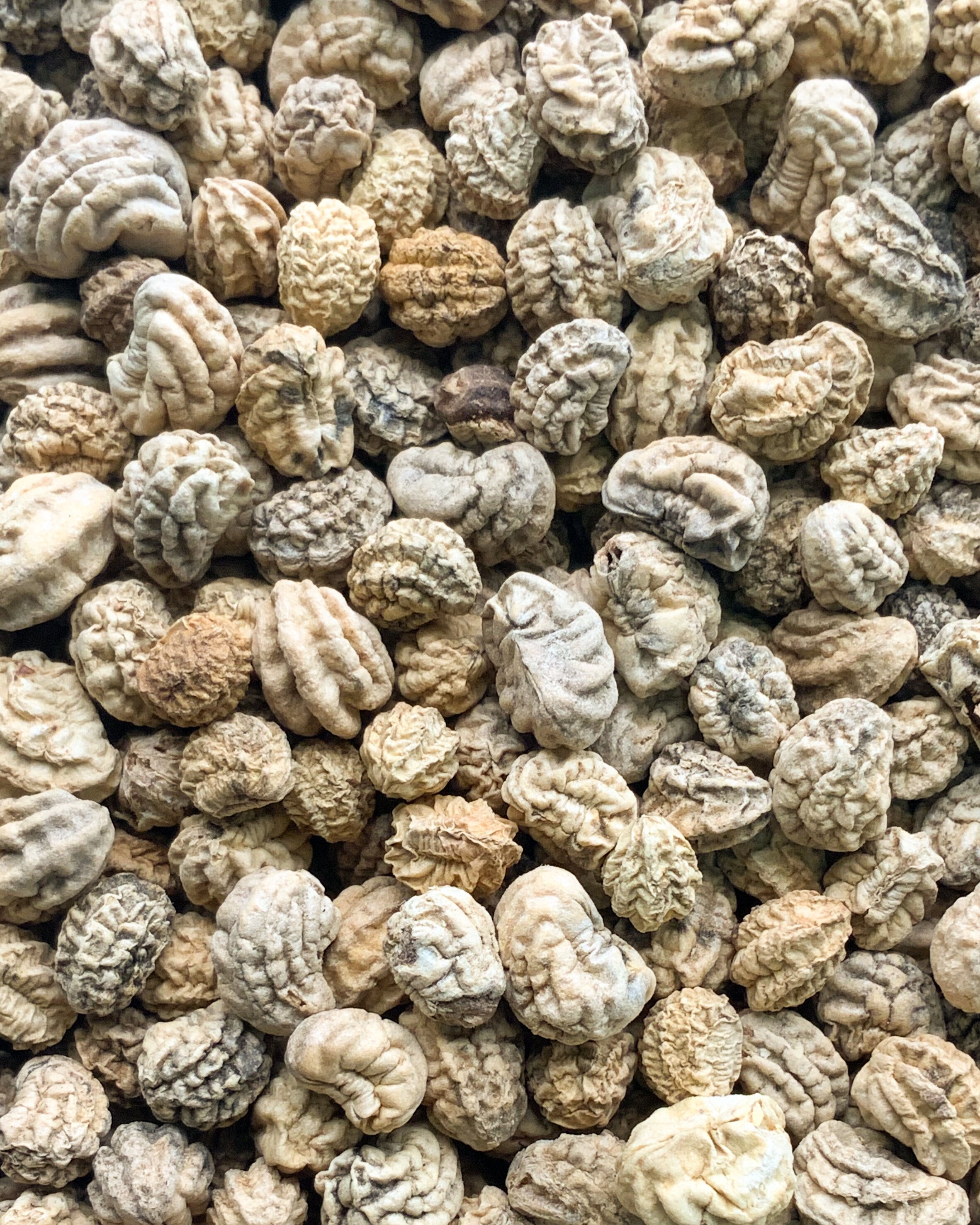
Nasturtium's seed in dry condition
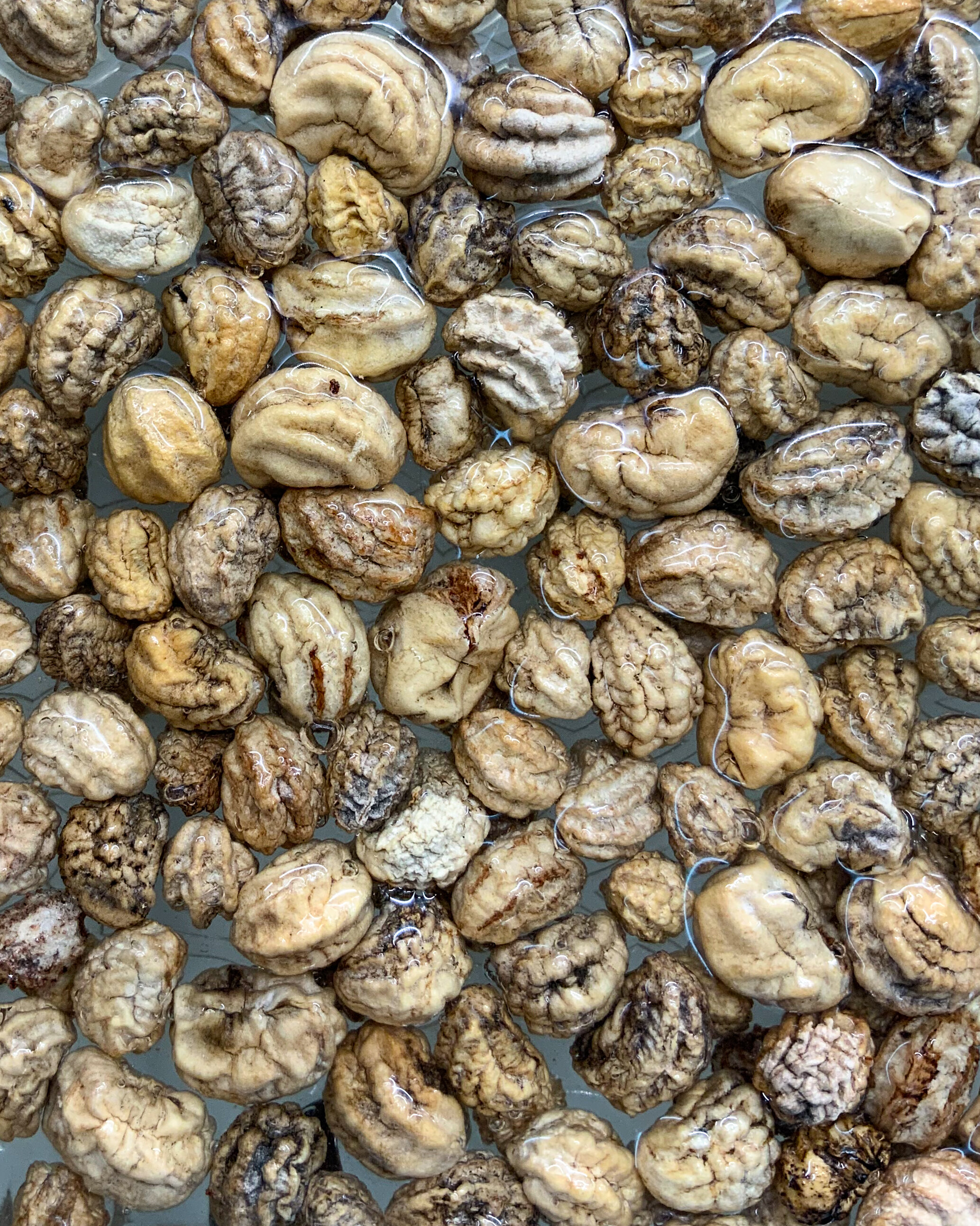
Nasturtium's seeds soak in water for 2 hours help soften its shell for optimal germination rate
Grow from Seed
Since seed of Nasturtium cover with its hard shell. If sow it directly into soil, it will take longer time to germinate or may even can't germinate. Therefore, soak seeds in water for at least 2 hours before sowing to soft its shell could improve the germination rate. For optimal germination rate, we have two solutions:
Peel off the soften shell until seeing the seed insideUse cutter to open a small window and allow water to get inside the seed for better germination
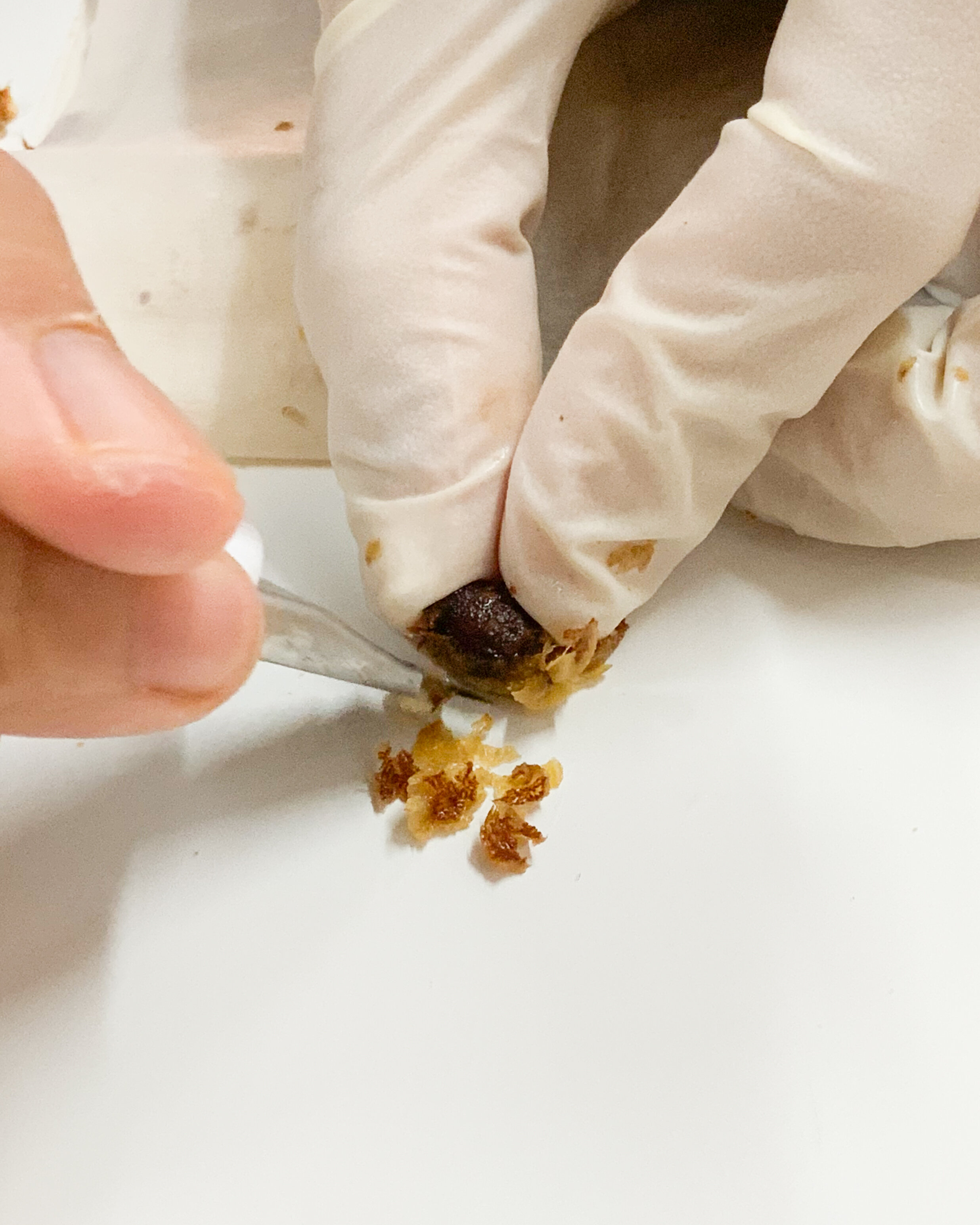
Use nails or tools to peel off the shell
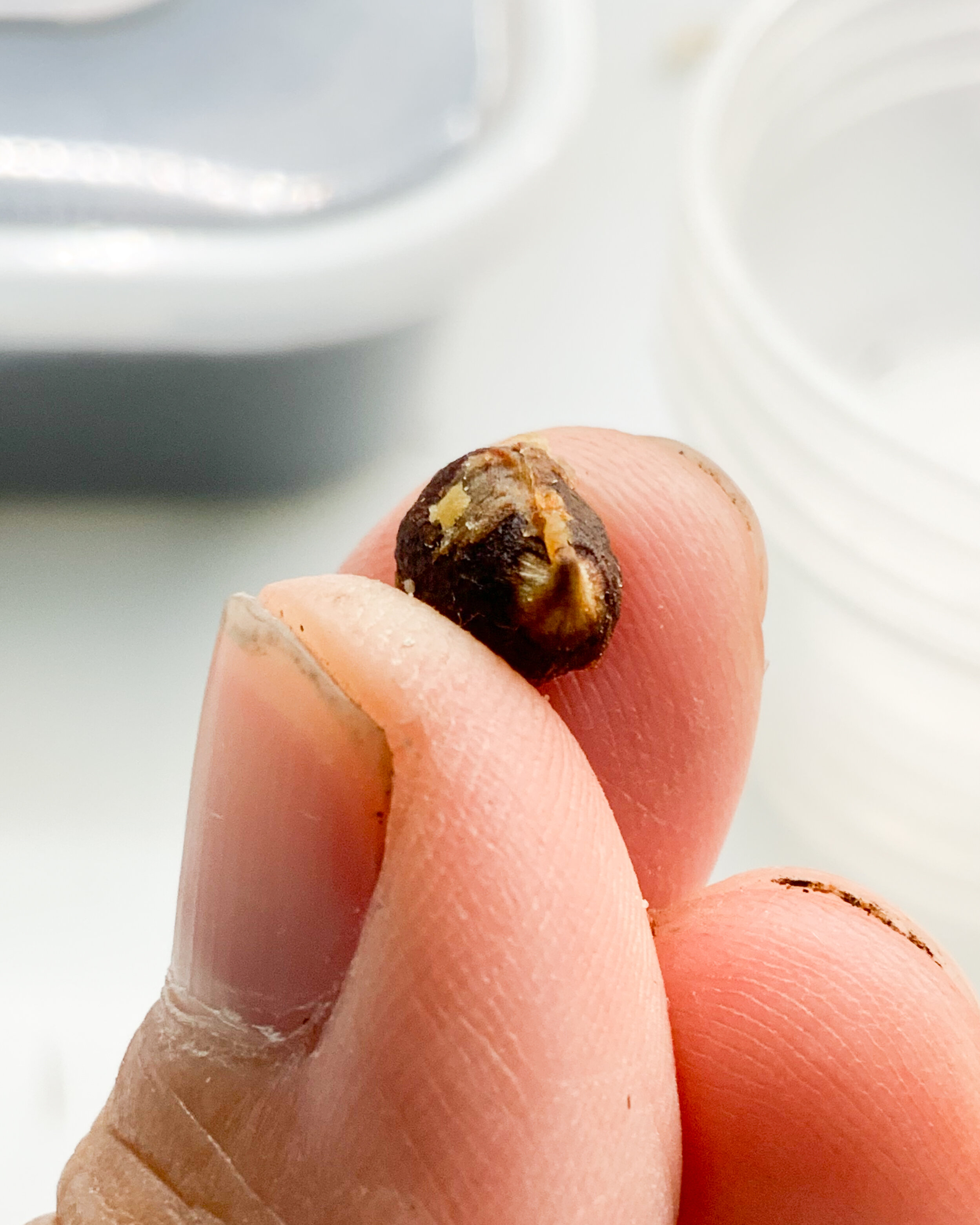
Inside the shell, can see the seed of Nasturtium
When seeds ready. Plant seeds about 1 cm deep directly into growing container(5 inches). Place the container in a darker corner and keep soil moist for germination.
How to Harvest
Leaves and flowers can be harvested at any time, at any size of your preference.Snip off leaves, flowers, with a pair of scissors or knife to avoid damaging the plant.
Tips: Only harvest 30% leaves of our plant for continuously grow.
How to Take Care Nasturtium
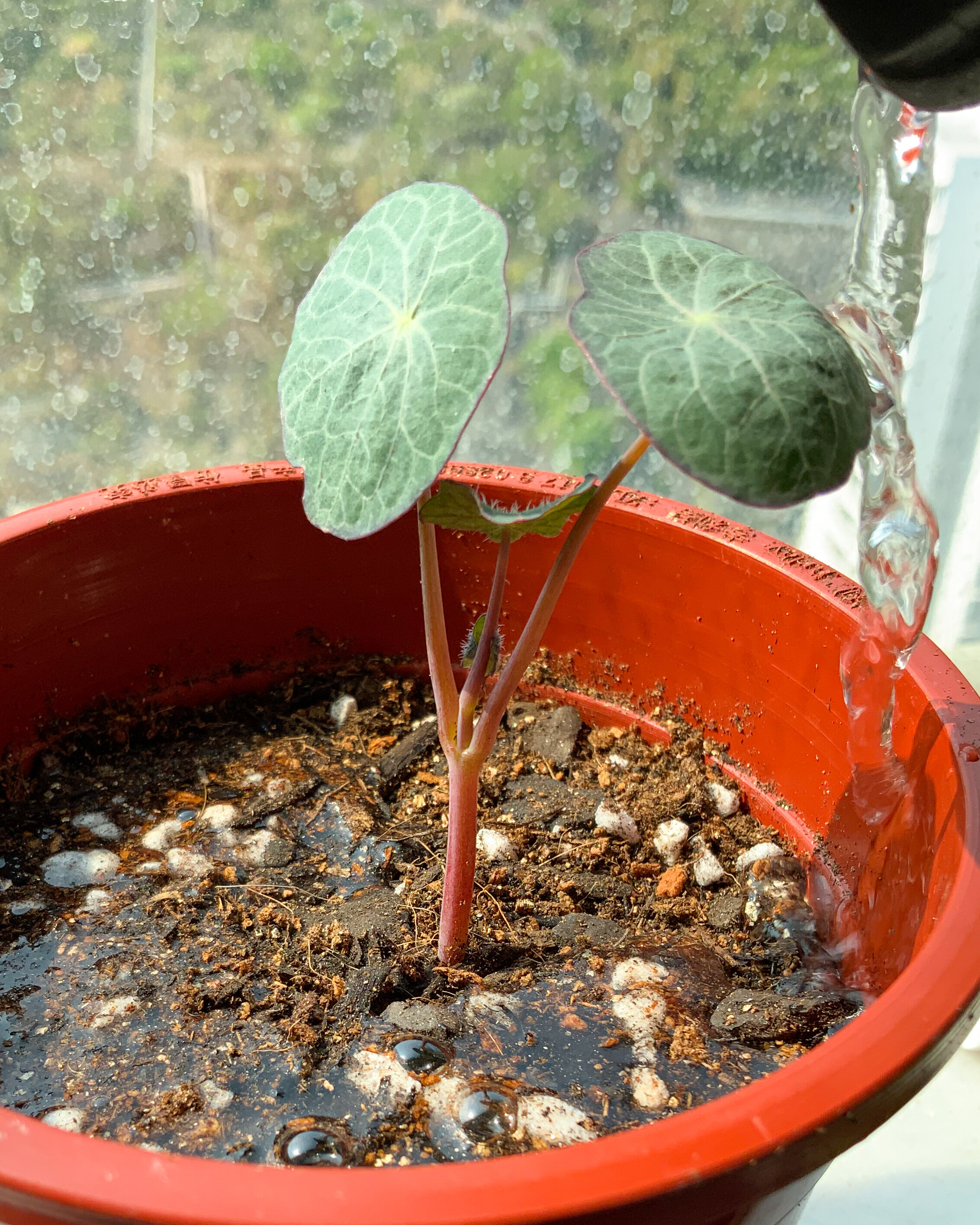
Water Nasturtium depend on its needs
Taking Care of Nasturtium is Minimal
- Water Nasturtium regularly. Check the top 1cm layer of soil and If it is dried, then water it thoroughly.
- Water them more often in summer to reduce the heat-stressed. As mentioned in precious, their optimal temperature for growing is 24°C.
- Morning is always the best watering time.
- Pruning off the flowers and leaves that with appearance of faded or dead.
- They do attract aphids if you grow them outdoors and have them in the environment, but can also use them as pest control to get aphids away from other plants.
How to Eat Nasturtium
- Indeed, nasturtium is beautiful to look at but they are even better to eat. Yes, both the leaf and flower.
- Nasturtium’s leaves flavour starts out with a light sweetness and ends with a spicy and peppery punch. We've taken the liberty to compile a few of our favourite simple and fun recipes that utilise nasturtium to enhance the dish or even meals.
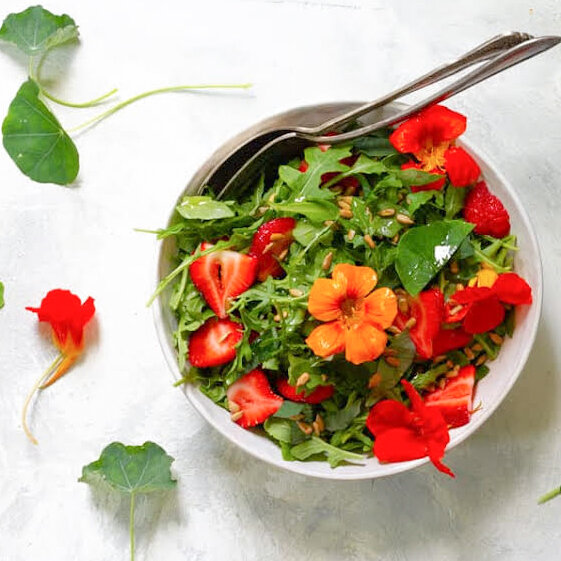
Photo source: Yummly
Nasturtium Salad with Strawberry - Anti-aging boost
Eat more colours! A colourful salad is always a good idea.
P.S. Strawberry is noted to be an excellent source of vitamin C, manganese, antioxidants and potassium. Research has shown they provide great benefits for heart health and blood sugar control, immune and skin health.
Here are more refreshing salad recipes perfect for the hot weather.
Nasturtium Flowers & Leaves Salad
Tomato & Nasturtium Salad With Elder-flower Dressing
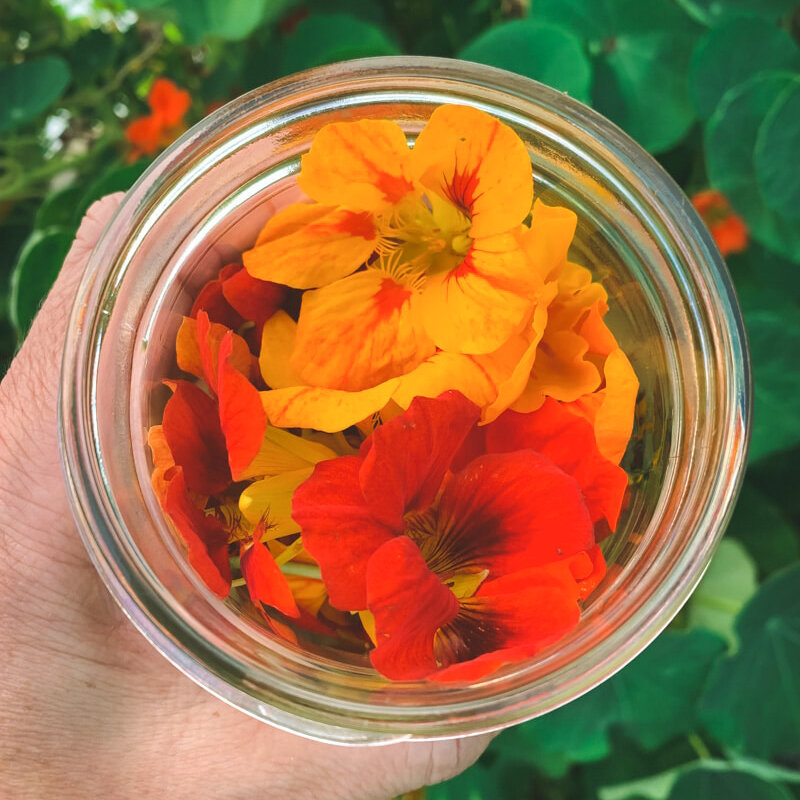
Photo Source: Grow Forage Cook Ferment
Peppery Salad Dressing - Preserve Nasturtium Flowers by vinegar
If you a fan of seasoning your salad with black pepper, you should really try this: Nasturtium Flower Infused Vinegar.
This infusion recipe is pretty simple and easy. You can add this vinegar to the Nasturtium salad mentioned in above to intensify the peppery flavour.
See How to Make Nasturtium Flower Infused Vinegar
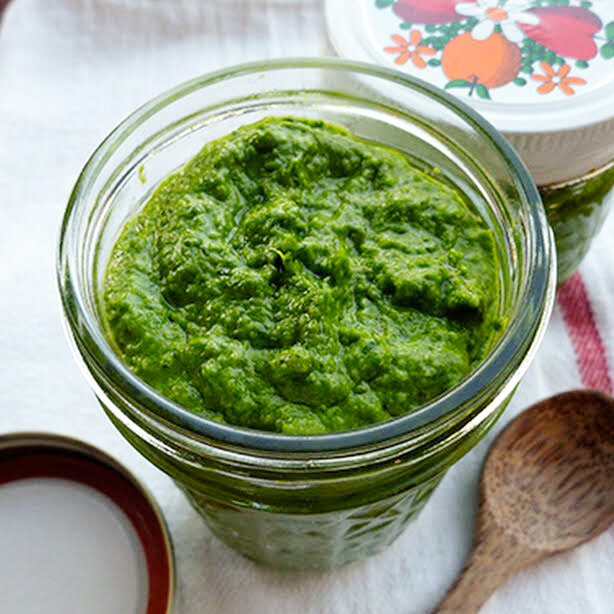
Photo Source: Yummly
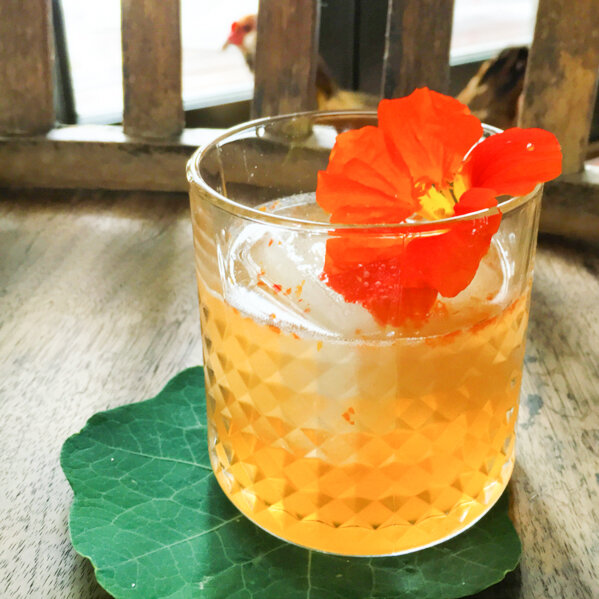
Photo Source: Drink With Chickens
Alcoholic Concoctions: Nasturtium Vodka & Cocktail

